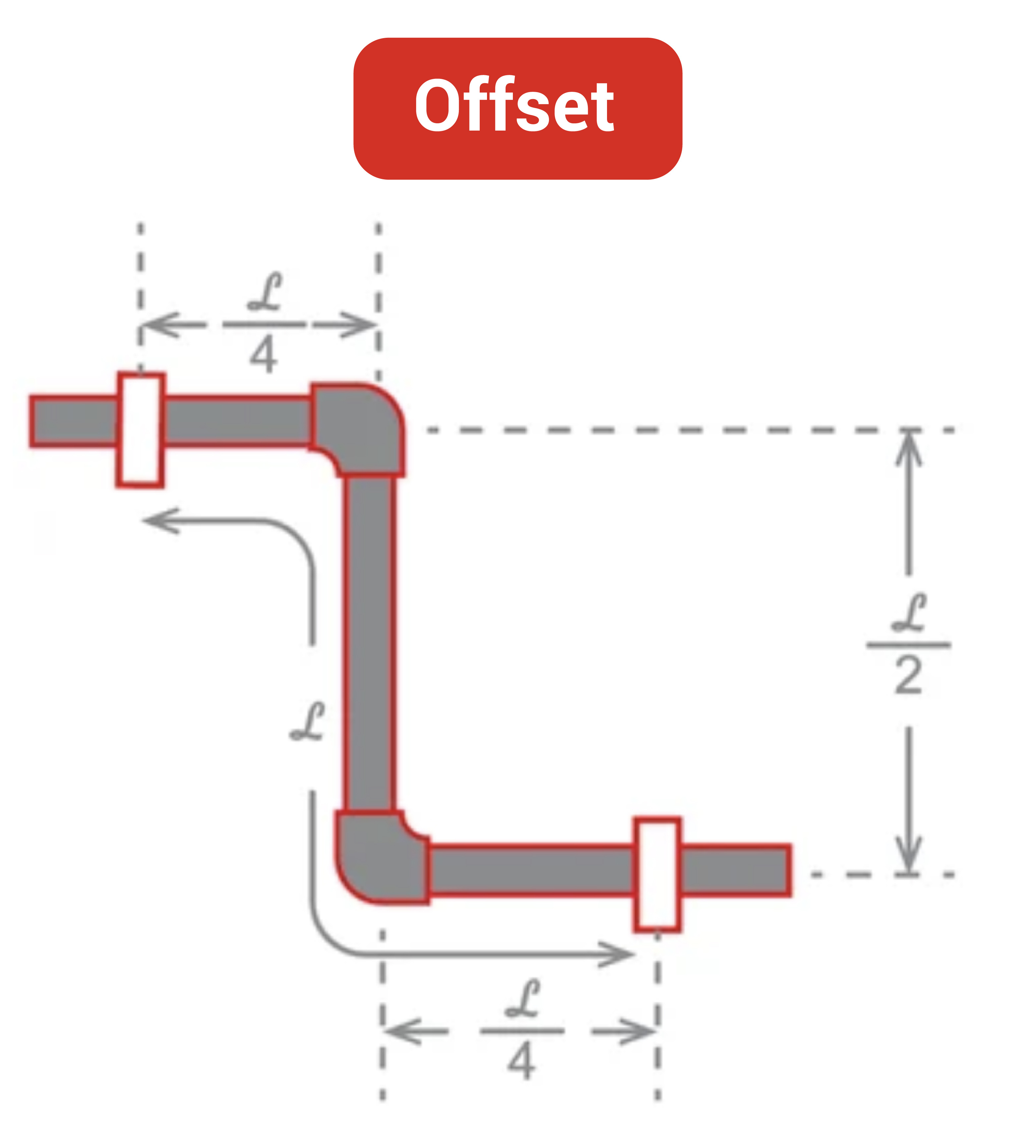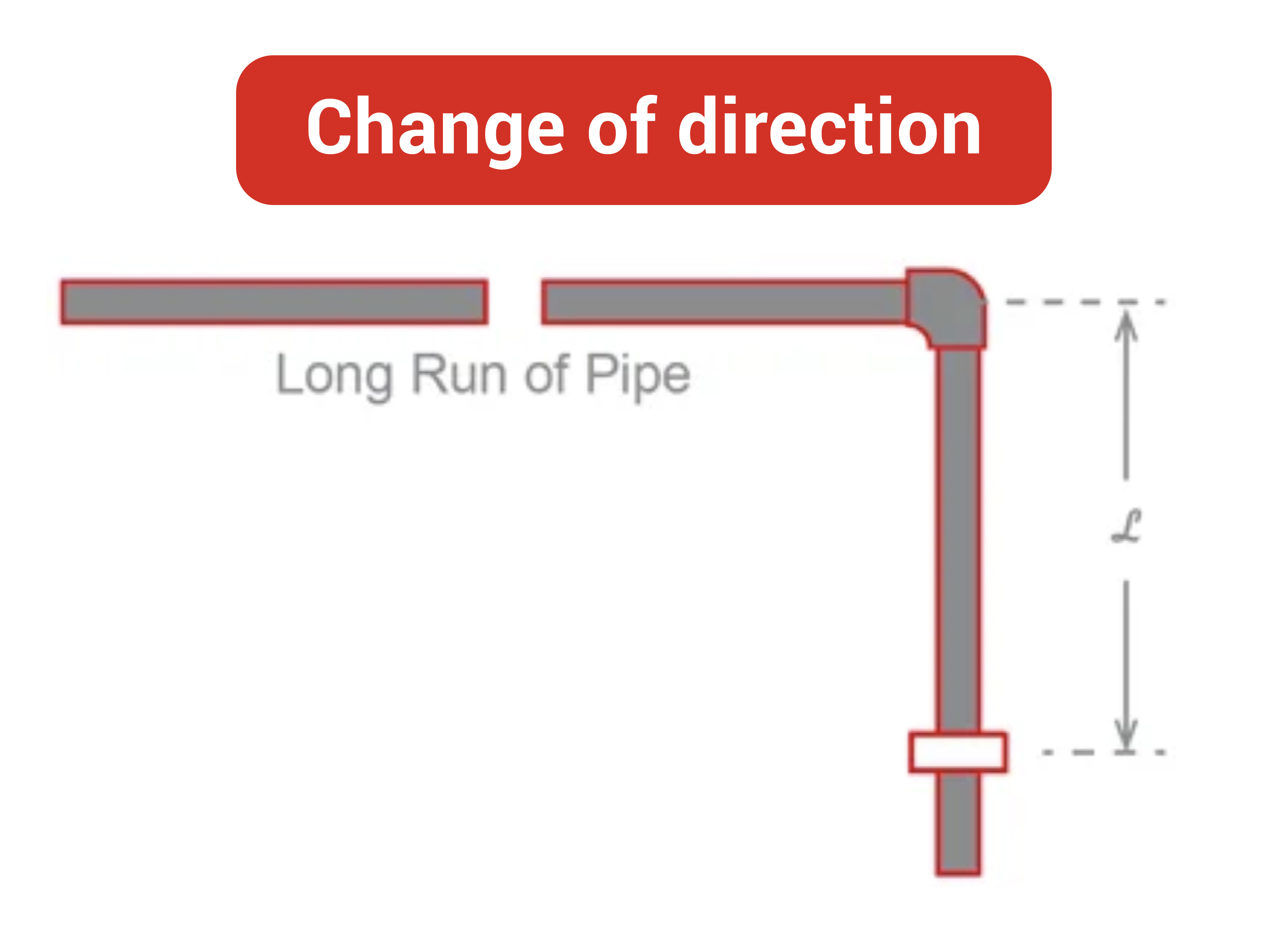How to Account for Pipe Expanding in Plumbing Systems
-
Managing thermal pipe expanding in plumbing systems is crucial to avoid compressive stress and potential leaks.
-
Deflection mechanisms such as expansion loops and pipe expansion joints efficiently manage the effects of temperature changes on pipes.
-
Proper installation and planning for pipe expansion, including reliable tools like the FlowGuard® CPVC Pipe Expansion Calculator, are key to a durable plumbing system.
Thermal expansion and contraction are natural properties of all materials, including those used in piping. This physical characteristic means that as water and the surrounding environmental temperatures fluctuate, so too will the length of the pipe. The significance of this change grows with the length of the pipe run, potentially leading to compressive stress on both water pipe and fittings. Such stress, if not properly managed through system design, can weaken the piping structure over time, leading to both leaks and premature need for pipe repairs.
Fortunately, through the application of deflection mechanisms, the risk posed by thermal expansion and contraction can be substantially mitigated.
Understanding Why Deflection Mechanisms Are Effective
FlowGuard® CPVC piping, known for its flexibility, is able to bend to a specific degree safely without damage. This flexibility is what deflection mechanisms leverage, permitting the pipe to move within its system limits while simultaneously reducing the stress on the material itself.
Interested in Hot and Cold Plumbing Systems?
Learn how Flowguard can help
DELIVERING
RELIABILITY
For more than 50 years, FlowGuard® Pipe and Fittings has provided reliable hot and cold water plumbing systems to residential and commercial buildings around the world.
Strategies for Deflecting Thermal Expansion
The temperature differential—essentially, the range of temperatures a pipe will endure from installation to the end of its service life—necessitates the inclusion of deflection configurations in the plumbing system if the temperature change is notable. For spaces accommodating such piping systems, four main mechanisms can deflect expansion stress: expansion loops, expansion offsets, changes of direction, and expansion joints.
Expansion Loops
Among the most favoured choices for managing pipe expanding are piping expansion loops. These are essentially “U” configurations set within a pipe's length, with the loop's middle restrained and each incoming pipe run equipped with a hanger or guide. These components permit backward and forward movement as the pipe length adjusts to temperature changes. By allowing the "U" to expand or contract as required, the flexible pipes accommodate movement efficiently.
Expansion Offsets
Used to navigate around immovable structures, expansion offsets rely on elbows that flex inward as the pipe expands, shifting the vertical length slightly right or left depending on expansion or contraction. This method is especially useful for directing pipe expansion in constrained spaces.

Changes in Direction
The innate design of piping systems with changes in direction can also serve as deflection mechanisms. The natural elbow bends and adjoining pipes at the end of long runs allow for a degree of movement that can absorb some thermal expansion stress.

Pipe Expansion Joint
In situations where space constraints make it impractical to incorporate expansion loops or offsets, a pipe expansion joint is often the go-to solution. Functioning somewhat like a shock absorber, these joints give pipes the freedom to move within another pipe while preserving an essential seal—albeit at a higher cost and typically as a measure of last resort.
Best Practices for Deflection Configuration
Crucial to the longevity and function of a plumbing system is adherence to best practices concerning thermal expansion and contraction. This includes constructing expansion loops from straight pipes and 90° elbows, avoiding the restriction of natural pipe movement, and ensuring adequate spacing around elbows and restraints. Always consult local codes and manufacturer instructions for the most accurate guidance.
Calculate Expansion Loop Dimensions for Your Piping System
The FlowGuard CPVC Pipe Expansion Calculator stands as a valuable resource, offering plumbers an easy-to-use tool for calculating the linear expansion of pipes. This free calculator assists in determining the dimensions needed for an effective expansion loop.
For further inquiries or to learn more about leveraging FlowGuard Pipe and Fittings in your plumbing systems, reach out to our team of piping systems consultants.
DELIVERING
RELIABILITY
For more than 50 years, FlowGuard® Pipe and Fittings has provided reliable hot and cold water plumbing systems to residential and commercial buildings around the world.
DELIVERING
RELIABILITY
For more than 50 years, FlowGuard® Pipe and Fittings has provided reliable hot and cold water plumbing systems to residential and commercial buildings around the world.
.png)
-1.png)